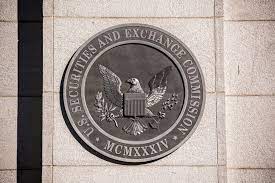SEC Implements Clawback Rules

The “hot” regulatory and compliance issue is incentives (and conversely disincentives). The Justice Department has launched an initiative to require compliance programs to institute clawbacks and other measures to recover bonuses and benefits from senior executives and managers that commit misconduct. The Justice Department directed the Criminal Division to study this issue and propose additional measures to ensure that bad actors are punished financially.
Right after DOJ implemented this measure, the SEC announced final rules to require listed companies to implement clawback policies for erroneously awarded incentive payments. It took the SEC seven years to adopt these rules, after proposing them in 2015. The new rules implement Section 954 of the Dodd-Frank Act.
The new SEC Rule 10D-1 requires all exchanges to establish listing standards that require issuers to maintain written clawback policies that meet the following requirements: (1) the company must recover any incentive compensation equal to any amount earned through an accounting restatement caused by a material violation of financial reporting requirements; (2) the clawback should be required regardless of the level of culpability; and (3) shall apply to all restatements.

Companies are required to file a copy of their policy with the SEC. In the event of a restatement, the company has to disclose how they applied the clawback policy. If a company does not adopt a clawback policy, it will be subject to delisting.
All companies listed on a national exchange are subject to the clawback rules, except certain registered investment companies.
The clawback rules apply to “executive officers,” which include the company’s president, principal financial officers, principal accounting officer, any vice president of a business unit or division and any other person who performs policymaking functions. A company’s clawback policy has to be triggered by a company restatement that corrects an error in previously issued financial statements that was material.
The term clawback or incentive-based compensation applies to cash or equity in whole or in part on the attainment of a “financial reporting measure.” Incentive-based compensation does not include base salary or compensation based on continued employment for a specific period of time.
The rules permit limited exceptions to the clawback requirement, including where enforcement costs exceed the amount to be recovered or violate the requirements of a tax-qualified retirement plan. Clawback actions are evaluated on a no-fault basis, meaning it is irrelevant to whether the executive committed misconduct. Executives are required to pay the clawback “promptly, and the company mist disclose any clawbacks not paid after 180 days.

The clawback requirement extends to any incentive-based compensation received by an executive during a three-year period preceding the financial restatement. The amount recovered has to be calculated to equal the amount of excess the executive received over the “correct” amount of the incentive-based payment if calculated based on the restatement financial amount.
The SEC adopted specific disclosure requirements for clawbacks. Regulation S-K was amended to require companies to disclose how they have applied their clawback policy.
Companies have to implement a clawback policy once the listing exchange adopts a rule requiring adoption of a policy. If a company has an existing clawback policy, the company has to review its policy to ensure it meets the requirements of the SEC rule and applicable listing rule.
















1 Response
[…] Source link […]